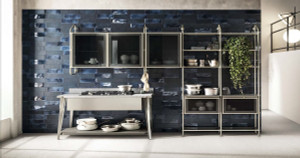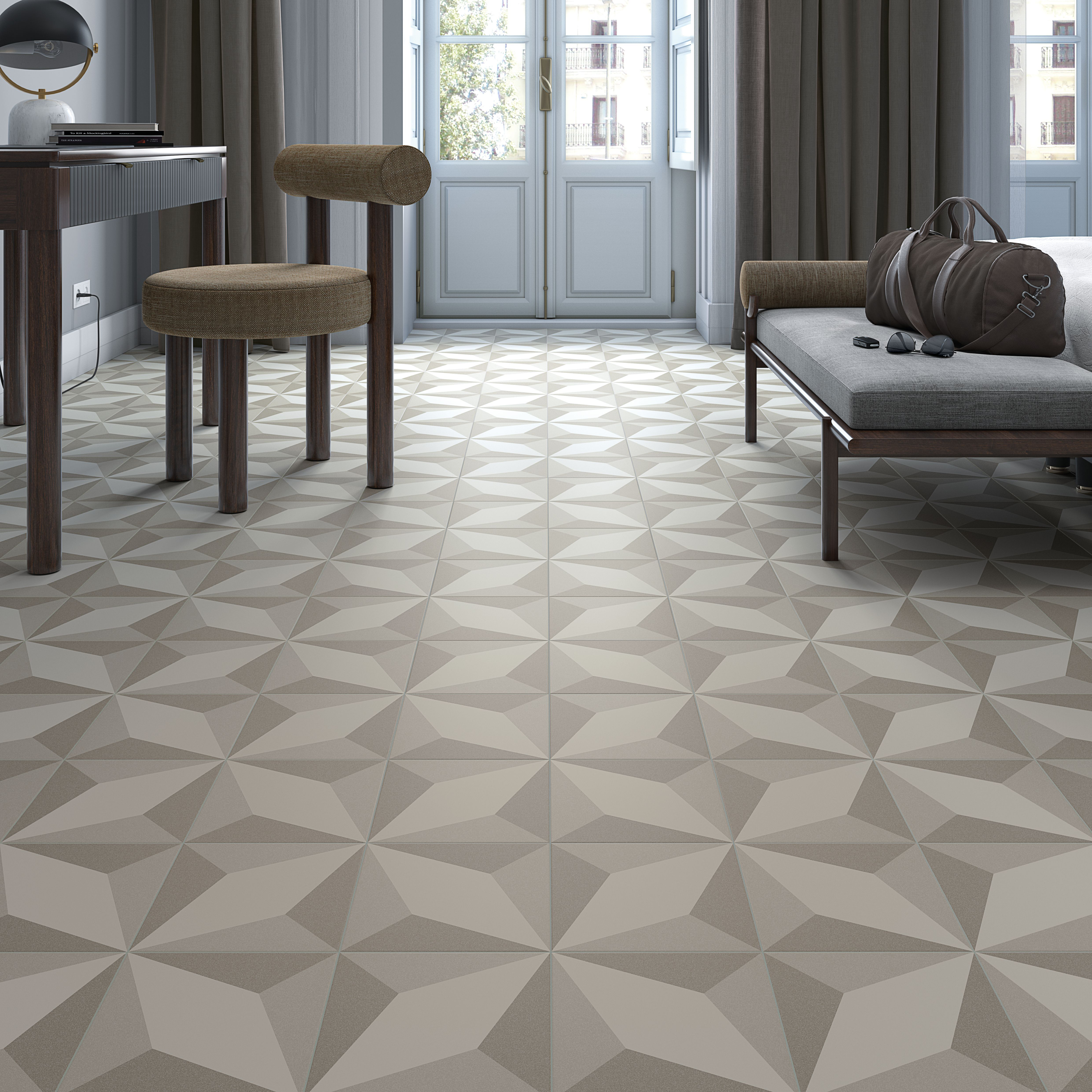30th Apr 2020
A Helpful A to Z of common tile terms
Abrasion resistance: How much foot traffic a tile is suited to – in Australia and New Zealand we use a PEI system for commercial jobs to help determine how well a tile will wear. We give our tiles a grade from 1 to 5 to help you understand what area a tile is suited to.
Grade 1 – Suitable for wall only
Grade 2 – Suitable for light residential foot traffic such as a bathroom floor
Grade 3 – Suitable for residential foot traffic for areas like a hallway or kitchen in a home
Grade 4 – Suitable for light commercial for areas like a retail shop or an office
Grade 5 – Suitable for heavy commercial such as the entrance to a mall or an airport
Batch: The production run that a tile is produced in is called a batch. Colours can very slightly vary from batch to batch as can the size of the tile (if it is not a rectified tile) tiles. This is why you shouldn’t split batches when using tiles in a project.
Body: The primary structural part of the tile, excluding the glaze.
Bullnose: Tiles with a rounded finished edge, often used on pool edges.
Cement tiles: Are tiles that are made from pressed cement rather than being fired in a kiln. They are popular for their natural look that mellows and fades as they age. They usually have patterns and are also known as Moroccan tiles.
Ceramic: Ceramic is a catch all term for porcelain and non-porcelain tiles. Porcelain tiles are made with clay that has less impurities and are fired at hotter temperatures and are therefore harder and have less water absorption. Usually non-porcelain tiles are referred to as ceramic tiles.
3D tiles: A three-dimensional tile with a sculpted surface, resulting from new tile technology. The effect can be subtle or dramatic.
Epoxy: A resin-based grout that is more durable and stain proof that normal grouts. It’s more costly and difficult to install but is easier to care for in the long run.
Format: The size and shape of a tile. Formats range from tiny 15 x 15 millimetre mosaics to extra large tiles which are meters long. Tiles come in square, rectangular and many other shapes. Format strongly affects the perceived size and shape of a space.
Finish: The processing of a tile to achieve surface appearance. There are many options, including
Matt – Has a matt surface, the surface of the tile is not processed further after firing.
Polished or semi-polished – After firing the tile is mechanically polished, up to 1mm of the material’s surface is removed for a shiny, reflective finish. Polished finishes are more durable than gloss finishes.
Honed/Satin – a semi-polished finish with a silky smooth effect rather than a shiny look
Gloss – A glaze is applied to the top layer of the tile to give it a hard non-porous surface. Glazes can have a matt, semi-gloss or gloss finish. Glazed tiles are best suited to residential to light commercial settings.
Structured – A finish with ridges and dips in the surface of the tile, often used outdoors because of their anti-slip properties
Inkjet printing: This has opened up a huge diversity of tile options. Stone and timber textures and images such as graffiti, fabrics and scenes can be replicated on ceramic tiles. Printing is surface-applied and may eventually wear with heavy use.
Lippage: Tiles laid on an uneven or unstable substrate may subside in places with use, leaving some edges higher than others. It’s expensive to rectify so consider engaging a pro to ensure a level and stable substrate.
Mosaic: A ceramic tile around 15 millimetres square. Mosaics come in a variety of shapes and materials, glazed or unglazed, and are mounted on mesh backing for ease of laying. Companies such as Bisazza offer mosaics with a high glamour factor, using metallics and iridescent tiles for dramatic effects.
Nominal Size: Some tiles have very slight size differences between batches and some have slightly strange sizes such as 596 x 596mm. To make things simpler we label tiles with their nominal size and we put the actual size of the batch on the order.
Pencil tiles, finger tiles, kit kat tiles: Narrow rectangular tiles, about 20 x 200 millimetres used as accents on walls, usually glued onto mesh sheets for ease of laying.
Penny round tiles: Small coin-shaped tiles also glued onto mesh sheets for easy laying.
Rectified: A rectified tile has been cut after firing for near perfect straight edges and uniform size. Reducing the need for wide grout to allow for slight edge differences. Non-rectified tiles will have slightly different sizes between batches.
Sealant: A penetrating substance applied to porous tiles and grout to reduce staining from spills. Glazed tiles don’t need sealing. Consult a pro before DIY sealing, as some sealants suit particular tiles.
Terracotta: Natural unglazed fired clay tiles are often called Terracotta tiles, which literally means, "cooked earth”. Because this type of tile was so popular, any brownish-orange colour has also been called Terracotta which are durable paving and wall tiles.
Through-body, colour-body: The colour on the tile face continues through the body, so that chips and scratches aren’t obvious.
Tumbled: A process applied to stone tiles to give them a soft, worn look with rounded edges and a chalky finish. Smaller tiles are tumbled in a drum, larger ones are hand- or machine-chipped to achieve the look.
Vitrified: A fully vitrified tile has quartz and feldspar added before firing, creating a glass-like element in the tile body and a very low absorption rate of less than 0.5 per cent.
Wastage: The contingency allowed when ordering tiles to allow for breakage, faulty tiles, and cutting for awkward angles. Usually 10 per cent, higher if the area to be tiled is quite intricate. Allow for a small quantity to be set aside so you can replace any damaged tiles, or easily identify the batch or number reference.







































































